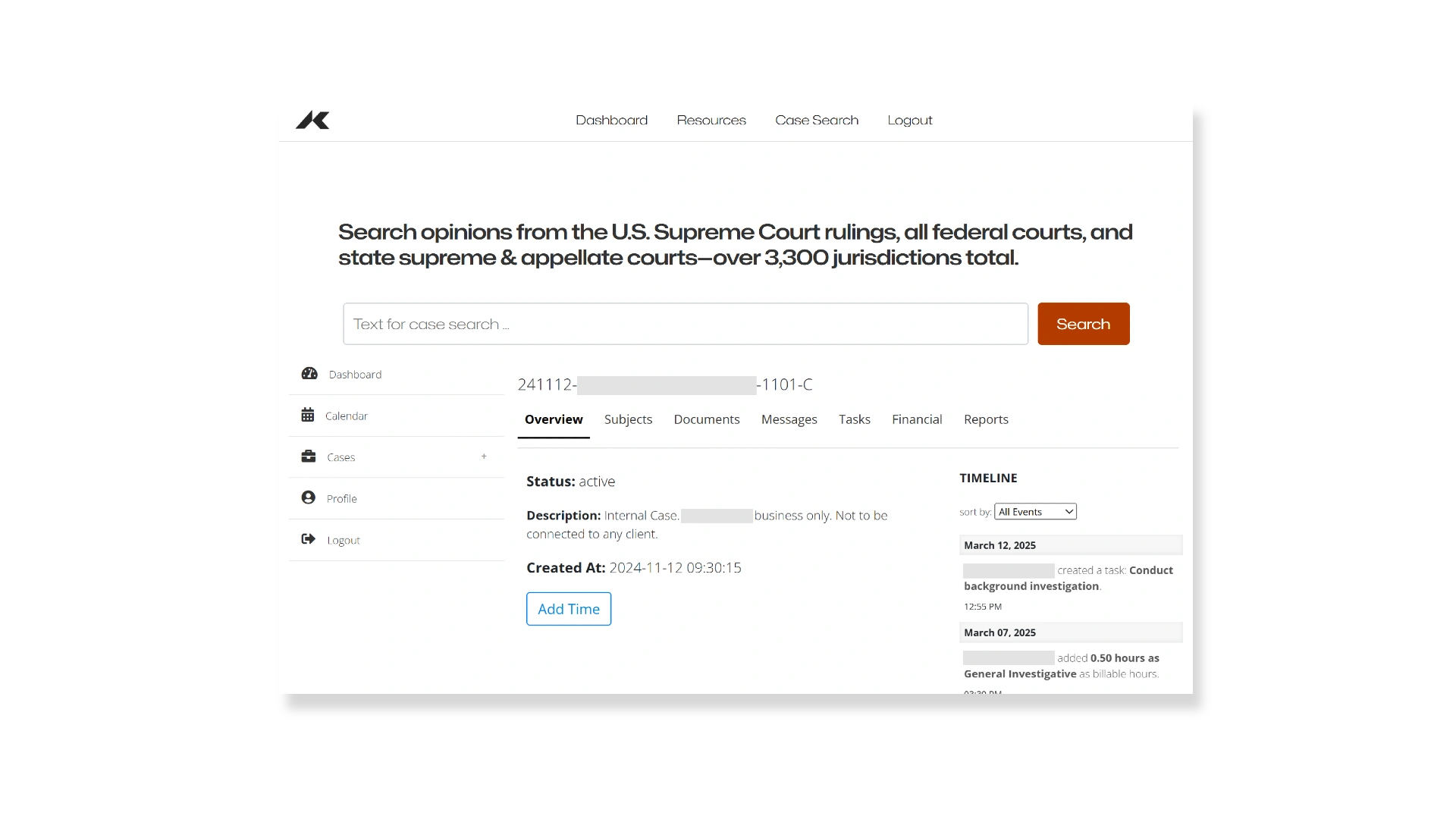Approach
Method & Standards
A defensible path from question to decision: structured collection, confidence scoring, and discovery-ready documentation.
1/13
Principles
- Decision-grade: we optimize for decisions, not page count.
- Provenance-first: every meaningful claim can be traced.
- Disclosure-ready: written to withstand discovery and cross-examination.
- Least necessary: collect what’s needed; minimize exposure and PII.
- Adversarial mindset: we attempt to disprove our own judgments.
2/13
Framing & Scope
- Decision question (who acts, by when, with what risk tolerance?)
- Hypotheses (primary, alternatives, null)
- Constraints (legal, contractual, time, geography, languages)
- Success criteria (what confirms/invalidates a hypothesis?)
3/13
Collection Standards
OSINT & Records
- Registries, court/regulatory, corporate disclosures
- Newswire, trade, technical, threat surfaces
- Contracted datasets (licensed, logged)
Human & Context
- Privilege-aware interviews; consent model
- Deconfliction; bias checks; two-source rule where feasible
- Counterparty perspective analysis
4/13
Source & Information Grading
Source Reliability
| Grade | Descriptor |
|---|---|
| A | Consistently reliable; past reporting corroborated. |
| B | Usually reliable; minor gaps. |
| C | Mixed reliability; needs corroboration. |
| D | Doubtful reliability; conflicts of interest likely. |
| E | Unreliable; contradicts known facts. |
Information Credibility
| Grade | Descriptor |
|---|---|
| 1 | Confirmed by independent sources. |
| 2 | Probably true; logical & consistent. |
| 3 | Plausible; more data required. |
| 4 | Doubtful; inconsistent or unverified. |
| 5 | Improbable; conflicts with reliable info. |
We grade the source and the information separately.
5/13
Confidence & Language
- High: multiple, independent confirmations; low analytic dispute.
- Medium: corroborated or strongly logical, but gaps remain.
- Low: limited or conflicting sources; assumptions carry weight.
Language discipline: avoid “certain,” prefer “we assess with medium confidence that…”. Include assumptions and limits.
6/13
Analytical Standards
Core Methods
- Triangulation; cross-domain corroboration
- Link & timeline analysis; change detection
- ACH / competing hypotheses
- Red-team challenge to key judgments
Bias & Error Controls
- Enumerated assumptions; confidence tags
- Blind source review where applicable
- Structured dissent & reviewer initials
- Versioned notes and change logs
7/13
Briefing Standard
- Executive Actions (prioritized)
- Key Judgments (with confidence)
- What Changed since last brief
- Indicators to Monitor
- Provenance (source & info grades)
- Assumptions & Limits
- Alternatives & Risks
- Appendix (evidence & citations)
8/13
Chain of Custody & Audit
Evidence Handling
- Time-stamped capture; hashing where applicable
- Append-only activity logs
- Role-based access; case segregation
- Redaction workflow; PII minimization
Documentation
- Who/what/when for material actions
- Source handling notes & limitations
- Disclosure readiness for counsel
9/13
Security & Privacy
- Encryption in transit & at rest; least-privilege access
- Segregated environments for sensitive matters
- Client-side key options on request
- Audit reports available under NDA
10/13
Retention & Disposal
- Default retention aligned to engagement letter
- Data minimization; purpose-bound storage
- Client-approved purge schedule; verifiable deletion logs
11/13
Review & QA
- Peer review on key judgments (named reviewer)
- Red-team challenge for high-impact briefs
- Change log with rationale and timestamps
12/13
Escalation & SLAs
We map severity to confidence with response SLAs.
| Confidence \ Severity | Low | Moderate | High | Critical |
|---|---|---|---|---|
| Low | Log & monitor | Light triage | Notify owner | Notify leadership |
| Medium | Track indicator | Triage < 24h | Action < 12h | Immediate convening |
| High | Note in brief | Prepare intervention | Execute playbook | Execute now + counsel |
13/13
Glossary (Selected)
- Decision-grade: actionable within stated risk tolerance, with provenance.
- Provenance: the documented origin and handling of information/evidence.
- ACH: Analysis of Competing Hypotheses, a structured method to avoid bias.








